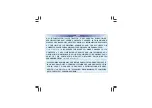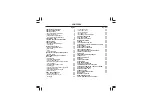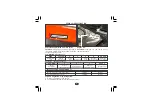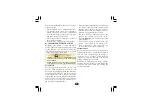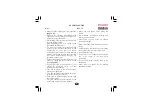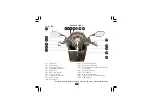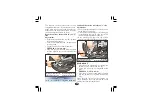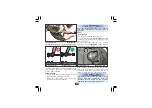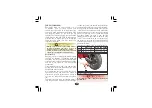
5
•
A two wheeler riding suit or jacket for
comfort as well as protection. Bright
coloured reflective clothing can help make
you more noticeable in traffic. Be sure to
avoid loose clothes that could get caught on
any part of your vehicle.
•
Sturdy boots with non-slip soles to help
protect your feet and ankles.
Additional riding gear
In addition to a helmet and eye protection, we
also recommend:
Your helmet is your most important piece of
riding gear because it offers the best
protection against head injuries. A helmet
should fit your head comfortably and securely.
A bright coloured helmet can make you more
noticeable in traffic, as can reflective strips.
•
Leather gloves to keep your hands warm
and help prevent blisters, cuts, burns, and
bruises.
An open-face helmet offers some protection,
but a full-face helmet offers more. Always
wear face shield or goggles to protect your
eyes and help your vision.
Helmets and eye protection
Personal safety is your first priority. If you or
anyone else has been injured, take time to
assess the severity of the injuries and whether
it is safe to continue riding. Call for emergency
assistance if needed. Also follow applicable
laws and regulations if another person or
vehicle is involved in the crash.
For your safety, we strongly recommend that
you always wear an approved helmet (ISI
marked), eye protection, boots, gloves, long
pants and a long sleeve shirt or jacket
whenever you ride. Take care of loose/
hanging clothes while solo/pillion riding.
Although complete protection is not possible,
wearing proper gear can reduce the chance of
injury when you ride.
If you decide to continue riding, first evaluate
the condition of your vehicle. If the engine is
still running, turn it off. Inspect for fluid leaks,
check the tightness of critical nuts and bolts,
and check the handlebar, brake levers, brakes,
and wheels. Ride slowly and cautiously. Your
vehicle may have suffered damage that is not
immediately apparent. Have your vehicle
thoroughly checked at a qualified service
facility as soon as possible.
PROTECTIVE APPAREL
Following are suggestions to help you choose
proper riding gear.
If you are involved in a crash
WARNING
!
!
•
Be sure you and your pillion always wear a
helmet, eye protection and other protective
apparel when you ride.
•
Not wearing a helmet increases the chance
of serious injury or death in a crash.

